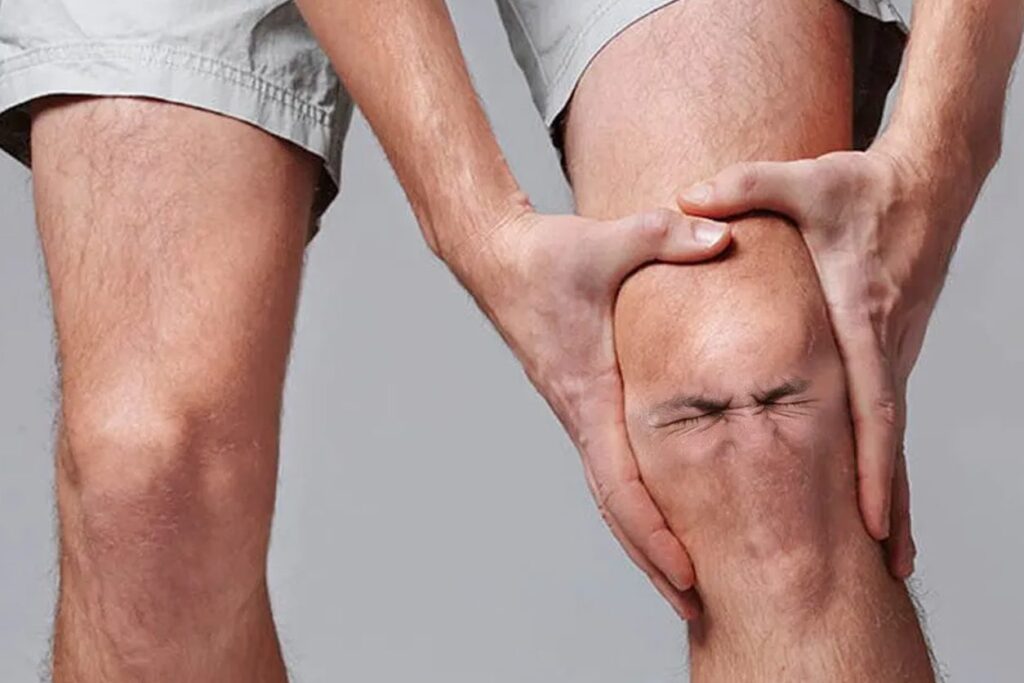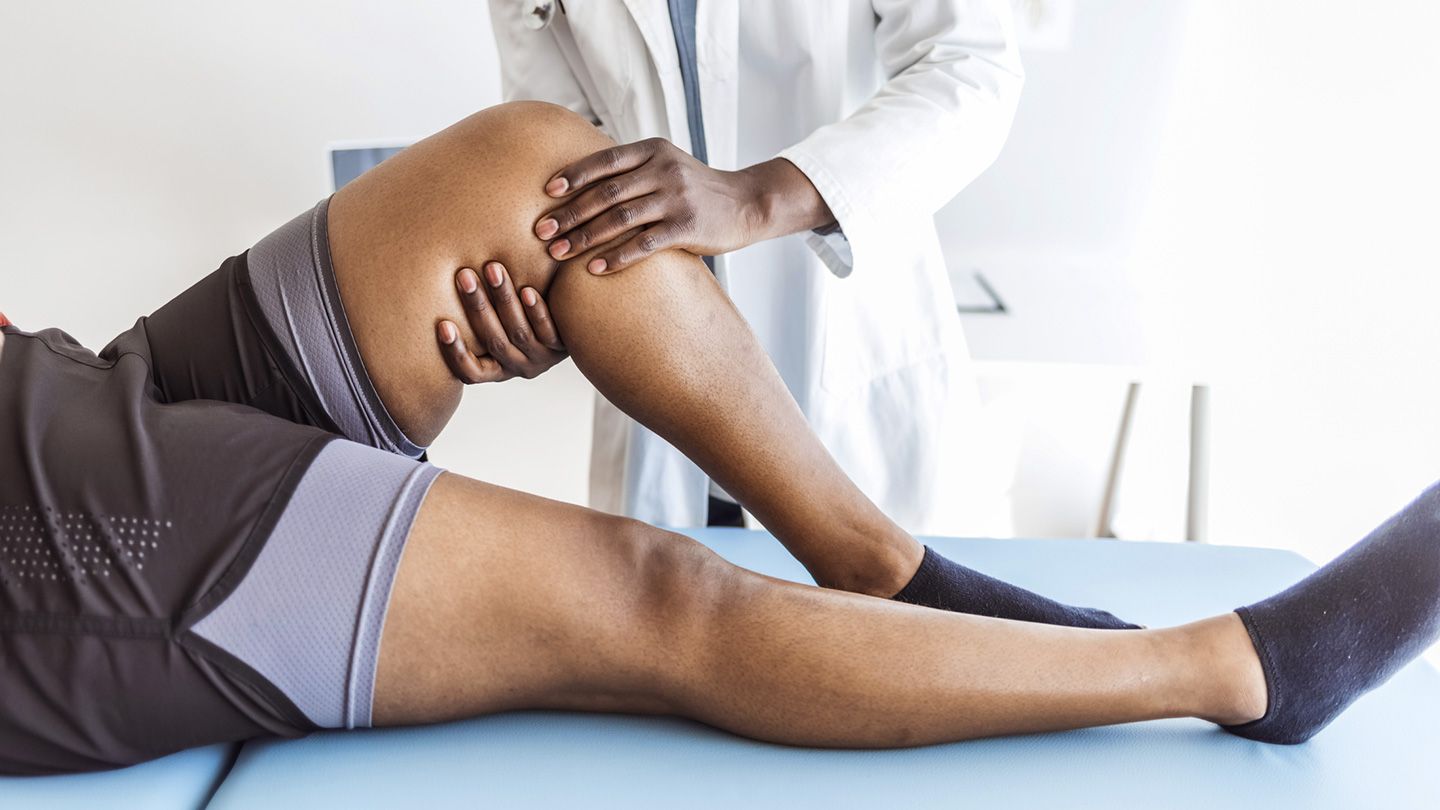Knee injuries are common among athletes, active individuals, and even those with everyday wear and tear. Some injuries cause mild discomfort, while others result in instability, pain, and swelling, making movement difficult. Understanding these injuries can help in early diagnosis, proper treatment, and faster recovery.
In this article, we’ll explore the most common knee injuries that cause instability, pain, and swelling, along with their symptoms and treatment options.
1. Anterior Cruciate Ligament (ACL) Tear

The ACL is a major ligament that helps stabilize the knee. Tears or ruptures in the ACL often occur due to sudden stops, pivots, or direct blows to the knee.
Symptoms of an ACL Tear:
- Sudden popping sound at the time of injury
- Immediate swelling and severe pain
- Instability when walking or standing
- Limited range of motion
Treatment Options:
- Rest, ice, compression, and elevation (RICE method)
- Physical therapy to regain strength and stability
- In severe cases, surgery may be required
2. Medial Collateral Ligament (MCL) Injury
The MCL is located on the inner side of the knee and helps keep it stable. MCL injuries often happen due to direct impact to the outer side of the knee, common in contact sports.
Symptoms of an MCL Injury:
- Pain and swelling along the inner knee
- Knee feeling unstable or weak
- Difficulty bending or straightening the knee
Treatment Options:
- Rest and ice therapy
- Bracing to support knee movement
- Physical therapy for rehabilitation
3. Posterior Cruciate Ligament (PCL) Injury
The PCL is located at the back of the knee and is injured less frequently than the ACL. It usually occurs due to a direct blow to the front of the knee, such as falling on a bent knee or a car accident.
Symptoms of a PCL Injury:
- Knee instability and swelling
- Mild to moderate pain at the back of the knee
- Difficulty walking or descending stairs
Treatment Options:
- RICE method
- Knee bracing and rehabilitation
- Surgery in severe cases
4. Meniscus Tear
The meniscus is a cartilage that cushions the knee joint. Twisting or sudden movements can cause a tear, especially in athletes or older adults with weak cartilage.
Symptoms of a Meniscus Tear:
- Swelling and stiffness in the knee
- A popping sensation during injury
- Locking or catching of the knee joint
- Knee feeling unstable when moving
Treatment Options:
- Rest and ice to reduce swelling
- Physical therapy to strengthen surrounding muscles
- Arthroscopic surgery in severe cases
5. Patellar Dislocation
A dislocated kneecap (patella) happens when the kneecap moves out of its normal position, usually due to a sudden twist or direct trauma.
Symptoms of a Patellar Dislocation:
- Severe knee pain and visible deformity
- Swelling and inability to move the knee
- Instability when walking
Treatment Options:
- Immediate repositioning of the kneecap by a medical professional
- Knee bracing for support
- Physical therapy to strengthen the knee and prevent future dislocations
Also Read: Spiritual Meaning Of Left Knee Pain – What Your Body Is Telling You!
When to Seek Medical Attention
If you experience persistent knee instability, pain, or swelling, it’s crucial to seek medical help. Delaying treatment can lead to further damage and prolonged recovery time.
Signs You Should See a Doctor:
✅ Severe swelling or inability to bear weight
✅ Knee feels unstable or gives out when walking
✅ A popping sound or immediate swelling after injury
✅ Persistent pain that doesn’t improve with rest
FAQ’s
1. What are the most common knee injuries that cause instability, pain, and swelling?
ACL tears, MCL injuries, PCL injuries, meniscus tears, and patellar dislocations are the most common causes.
2. What are the symptoms of an ACL tear?
Symptoms include a popping sound, immediate swelling, severe pain, instability, and limited range of motion.
3. How does an MCL injury affect knee stability?
An MCL injury weakens the inner knee, causing pain, swelling, and difficulty in bending or straightening the knee.
4. What causes a PCL injury?
PCL injuries usually result from a direct blow to the front of the knee, such as falling on a bent knee or a car accident.
5. Can a meniscus tear cause knee instability?
Yes, a meniscus tear can lead to swelling, stiffness, a popping sensation, and the knee locking or catching during movement.
6. What happens when the patella dislocates?
A patellar dislocation occurs when the kneecap moves out of place, leading to severe pain, swelling, and visible deformity.
7. How are these knee injuries treated?
Treatments range from rest, ice, compression, and bracing to physical therapy and, in severe cases, surgery.
8. When should I see a doctor for knee pain and instability?
Seek medical help if you experience severe swelling, inability to bear weight, persistent pain, or knee instability.
Conclusion
Knee injuries that cause instability, pain, and swelling often involve ligament tears, meniscus damage, or dislocations. Early diagnosis and appropriate treatment—ranging from rest and physical therapy to surgery—are essential for proper healing. If you suspect a serious knee injury, consult a healthcare provider to determine the best course of action for a safe and full recovery.






